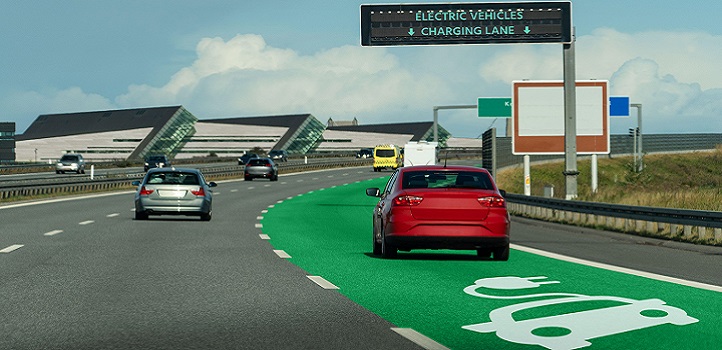Electrical Engineering
Charging ahead for electric vehicles
Roads installed with wireless charging technology could become an integral feature of our cities in an electric vehicle future.

By applying statistical geometry to analyzing urban road networks, KAUST researchers have advanced understanding of how wireless charging roads might influence driver behavior and city planning in a future where electric vehicles (EVs) dominate the car market.
“Our work is motivated by the global trend of moving towards green transportation and EVs,” says postdoc Mustafa Kishk. “Efficient dynamic charging systems, such as wireless power transfer systems installed under roads, are being developed by researchers and technology companies around the world as a way to charge EVs while driving without the need to stop. In this context, there is a need to mathematically analyze the large-scale deployment of charging roads in metropolitan cities.”
Many factors come into play when charging roads are added to the urban road network. Drivers may seek out charging roads on their commute, which has implications for urban planning and traffic control. Meanwhile, the density of charging road installations in a city, and the likely time spent on and between the charging roads by commuters, could influence the size of batteries installed in EVs by car manufacturers.
Calculating the metrics that could be used to analyze a charging road network is very significant, as Kishk’s lab colleague, Duc Minh Nguyen, explains.
“Our main challenge is that the metrics used to evaluate the performance of dynamic charging deployment, such as the distance to the nearest charging road on a random trip, depend on the starting and ending points of each trip,” says Nguyen. “To correctly capture those metrics, we had to explicitly list all possible situations, compute the metrics in each case and evaluate how likely it is for each situation to happen in reality. For this, we used an approach called stochastic geometry to model and analyze how these metrics are affected by factors such as the density of roads and the frequency of dynamic charging deployment.”
Applying this analysis to the Manhattan area of New York, which has a road density of one road every 63 meters, Kishk and Nguyen with research leader Mohamed-Slim Alouini determined that a driver would have an 80 percent chance of encountering a charging road after driving for 500 meters when wireless charging is installed on 20 percent of roads.
“This is the first study to incorporate stochastic geometry into the performance analysis of charging road deployment in metropolitan cities,” Kishk says. “It is an important step towards a better understanding of charging road deployment in metropolitan cities.”
References
-
Nguyen, D.M., Kishk, M.A. & Alouini, M.-S. Modeling and analysis of dynamic charging for EVs: A stochastic geometry approach. IEEE Open Journal on Vehicular Technology 1, 1 (2020).| article
You might also like

Bioengineering
Smart patch detects allergies before symptoms strike

Computer Science
Green quantum computing takes to the skies

Electrical Engineering
Micro-LEDs boost random number generation

Bioengineering
Sensing stress to keep plants safe

Computer Science
Sweat-sniffing sensor could make workouts smarter

Electrical Engineering
New tech detects dehydration by touching a screen

Electrical Engineering
A new interface for efficient electronics

Electrical Engineering




